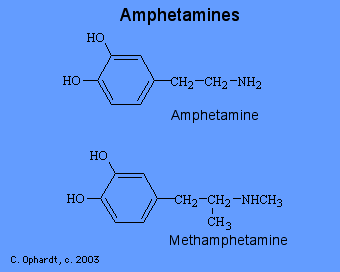Drugs Acting Upon the Central Nervous System
- Page ID
- 414
\( \newcommand{\vecs}[1]{\overset { \scriptstyle \rightharpoonup} {\mathbf{#1}} } \)
\( \newcommand{\vecd}[1]{\overset{-\!-\!\rightharpoonup}{\vphantom{a}\smash {#1}}} \)
\( \newcommand{\id}{\mathrm{id}}\) \( \newcommand{\Span}{\mathrm{span}}\)
( \newcommand{\kernel}{\mathrm{null}\,}\) \( \newcommand{\range}{\mathrm{range}\,}\)
\( \newcommand{\RealPart}{\mathrm{Re}}\) \( \newcommand{\ImaginaryPart}{\mathrm{Im}}\)
\( \newcommand{\Argument}{\mathrm{Arg}}\) \( \newcommand{\norm}[1]{\| #1 \|}\)
\( \newcommand{\inner}[2]{\langle #1, #2 \rangle}\)
\( \newcommand{\Span}{\mathrm{span}}\)
\( \newcommand{\id}{\mathrm{id}}\)
\( \newcommand{\Span}{\mathrm{span}}\)
\( \newcommand{\kernel}{\mathrm{null}\,}\)
\( \newcommand{\range}{\mathrm{range}\,}\)
\( \newcommand{\RealPart}{\mathrm{Re}}\)
\( \newcommand{\ImaginaryPart}{\mathrm{Im}}\)
\( \newcommand{\Argument}{\mathrm{Arg}}\)
\( \newcommand{\norm}[1]{\| #1 \|}\)
\( \newcommand{\inner}[2]{\langle #1, #2 \rangle}\)
\( \newcommand{\Span}{\mathrm{span}}\) \( \newcommand{\AA}{\unicode[.8,0]{x212B}}\)
\( \newcommand{\vectorA}[1]{\vec{#1}} % arrow\)
\( \newcommand{\vectorAt}[1]{\vec{\text{#1}}} % arrow\)
\( \newcommand{\vectorB}[1]{\overset { \scriptstyle \rightharpoonup} {\mathbf{#1}} } \)
\( \newcommand{\vectorC}[1]{\textbf{#1}} \)
\( \newcommand{\vectorD}[1]{\overrightarrow{#1}} \)
\( \newcommand{\vectorDt}[1]{\overrightarrow{\text{#1}}} \)
\( \newcommand{\vectE}[1]{\overset{-\!-\!\rightharpoonup}{\vphantom{a}\smash{\mathbf {#1}}}} \)
\( \newcommand{\vecs}[1]{\overset { \scriptstyle \rightharpoonup} {\mathbf{#1}} } \)
\( \newcommand{\vecd}[1]{\overset{-\!-\!\rightharpoonup}{\vphantom{a}\smash {#1}}} \)
\(\newcommand{\avec}{\mathbf a}\) \(\newcommand{\bvec}{\mathbf b}\) \(\newcommand{\cvec}{\mathbf c}\) \(\newcommand{\dvec}{\mathbf d}\) \(\newcommand{\dtil}{\widetilde{\mathbf d}}\) \(\newcommand{\evec}{\mathbf e}\) \(\newcommand{\fvec}{\mathbf f}\) \(\newcommand{\nvec}{\mathbf n}\) \(\newcommand{\pvec}{\mathbf p}\) \(\newcommand{\qvec}{\mathbf q}\) \(\newcommand{\svec}{\mathbf s}\) \(\newcommand{\tvec}{\mathbf t}\) \(\newcommand{\uvec}{\mathbf u}\) \(\newcommand{\vvec}{\mathbf v}\) \(\newcommand{\wvec}{\mathbf w}\) \(\newcommand{\xvec}{\mathbf x}\) \(\newcommand{\yvec}{\mathbf y}\) \(\newcommand{\zvec}{\mathbf z}\) \(\newcommand{\rvec}{\mathbf r}\) \(\newcommand{\mvec}{\mathbf m}\) \(\newcommand{\zerovec}{\mathbf 0}\) \(\newcommand{\onevec}{\mathbf 1}\) \(\newcommand{\real}{\mathbb R}\) \(\newcommand{\twovec}[2]{\left[\begin{array}{r}#1 \\ #2 \end{array}\right]}\) \(\newcommand{\ctwovec}[2]{\left[\begin{array}{c}#1 \\ #2 \end{array}\right]}\) \(\newcommand{\threevec}[3]{\left[\begin{array}{r}#1 \\ #2 \\ #3 \end{array}\right]}\) \(\newcommand{\cthreevec}[3]{\left[\begin{array}{c}#1 \\ #2 \\ #3 \end{array}\right]}\) \(\newcommand{\fourvec}[4]{\left[\begin{array}{r}#1 \\ #2 \\ #3 \\ #4 \end{array}\right]}\) \(\newcommand{\cfourvec}[4]{\left[\begin{array}{c}#1 \\ #2 \\ #3 \\ #4 \end{array}\right]}\) \(\newcommand{\fivevec}[5]{\left[\begin{array}{r}#1 \\ #2 \\ #3 \\ #4 \\ #5 \\ \end{array}\right]}\) \(\newcommand{\cfivevec}[5]{\left[\begin{array}{c}#1 \\ #2 \\ #3 \\ #4 \\ #5 \\ \end{array}\right]}\) \(\newcommand{\mattwo}[4]{\left[\begin{array}{rr}#1 \amp #2 \\ #3 \amp #4 \\ \end{array}\right]}\) \(\newcommand{\laspan}[1]{\text{Span}\{#1\}}\) \(\newcommand{\bcal}{\cal B}\) \(\newcommand{\ccal}{\cal C}\) \(\newcommand{\scal}{\cal S}\) \(\newcommand{\wcal}{\cal W}\) \(\newcommand{\ecal}{\cal E}\) \(\newcommand{\coords}[2]{\left\{#1\right\}_{#2}}\) \(\newcommand{\gray}[1]{\color{gray}{#1}}\) \(\newcommand{\lgray}[1]{\color{lightgray}{#1}}\) \(\newcommand{\rank}{\operatorname{rank}}\) \(\newcommand{\row}{\text{Row}}\) \(\newcommand{\col}{\text{Col}}\) \(\renewcommand{\row}{\text{Row}}\) \(\newcommand{\nul}{\text{Nul}}\) \(\newcommand{\var}{\text{Var}}\) \(\newcommand{\corr}{\text{corr}}\) \(\newcommand{\len}[1]{\left|#1\right|}\) \(\newcommand{\bbar}{\overline{\bvec}}\) \(\newcommand{\bhat}{\widehat{\bvec}}\) \(\newcommand{\bperp}{\bvec^\perp}\) \(\newcommand{\xhat}{\widehat{\xvec}}\) \(\newcommand{\vhat}{\widehat{\vvec}}\) \(\newcommand{\uhat}{\widehat{\uvec}}\) \(\newcommand{\what}{\widehat{\wvec}}\) \(\newcommand{\Sighat}{\widehat{\Sigma}}\) \(\newcommand{\lt}{<}\) \(\newcommand{\gt}{>}\) \(\newcommand{\amp}{&}\) \(\definecolor{fillinmathshade}{gray}{0.9}\)The central nervous system directs the functions of all tissues of the body. The peripheral nervous system receives thousands of sensory inputs and transmits them to the brain via the spinal cord. The brain processes this incoming information and discards 99% as unimportant. After sensory information has been evaluated, selected areas of the central nervous system initiate nerve impulses to organs or tissue to make an appropriate response.
Chemical influences are capable of producing a myriad of effects on the activity and function of the central nervous system. Since our knowledge of different regions of brain function and the neurotransmitters in the brain is limited, the explanations for the mechanisms of drug action may be vague. The known neurotransmitters are: acetylcholine which is involved with memory and learning; norepinephrine which is involved with mania-depression and emotions; and serotonin which is involved with biological rhythms, sleep, emotion, and pain.
Central Nervous System Stimulants
Stimulants are drugs that exert their action through excitation of the central nervous system. Psychic stimulants include caffeine, cocaine, and various amphetamines. These drugs are used to enhance mental alertness and reduce drowsiness and fatigue. However, increasing the dosage of caffeine above 200 mg (about 2 cups of coffee) does not increase mental performance but may increase nervousness, irritability, tremors, and headache. Heavy coffee drinkers become psychically dependent upon caffeine. If caffeine is withheld, a person may experience mild withdrawal symptoms characterized by irritability, nervousness, and headache.

Caffeine and the chemically related xanthines, theophylline and theobromine, decrease in the order given in their stimulatory action. They may be included in some over-the-counter drugs. The action of caffeine is to block adenosine receptors as an antagonist. As caffeine has a similar structure to the adenosine group. This means that caffeine will fit adenosine receptors as well as adenosine itself. It inhibits the release of neurotransmitters from presynaptic sites but works in concert with norepinephrine or angiotensin to augment their actions. Antagonism of adenosine receptors by caffeine would appear to promote neurotransmitter release, thus explaining the stimulatory effects of caffeine.
Amphetamines
The stimulation caused by amphetamines is caused by excessive release of norepinephrine from storage sites in the peripheral nervous system. It is not known whether the same action occurs in the central nervous system. Two other theories for their action are that they are degraded slower than norepinephrine or that they could act on serotonin receptor sites. Therapeutic doses of amphetamine elevate mood, reduce feelings of fatigue and hunger, facilitate powers of concentration, and increase the desire and capacity to carry out work. They induce exhilarating feelings of power, strength, energy, self-assertion, focus and enhanced motivation. The need to sleep or eat is diminished.


Levoamphetamine (Benzedrine), dextroamphetamine (Dexedrine), and methamphetamine (Methedrine) are collectively referred to as amphetamines. Benzedrine is a mixture of both the dextro and levoamphetamine isomers. The dextro isomer is several times more potent than the levo isomer.
The misuse and abuse of amphetamines is a significant problem which may include the house wife taking diet pills, athletes desiring an improved performance, the truck driver driving non-stop coast to-coast, or a student cramming all night for an exam.
Contributors
- Charles Ophardt, Professor Emeritus, Elmhurst College; Virtual Chembook

